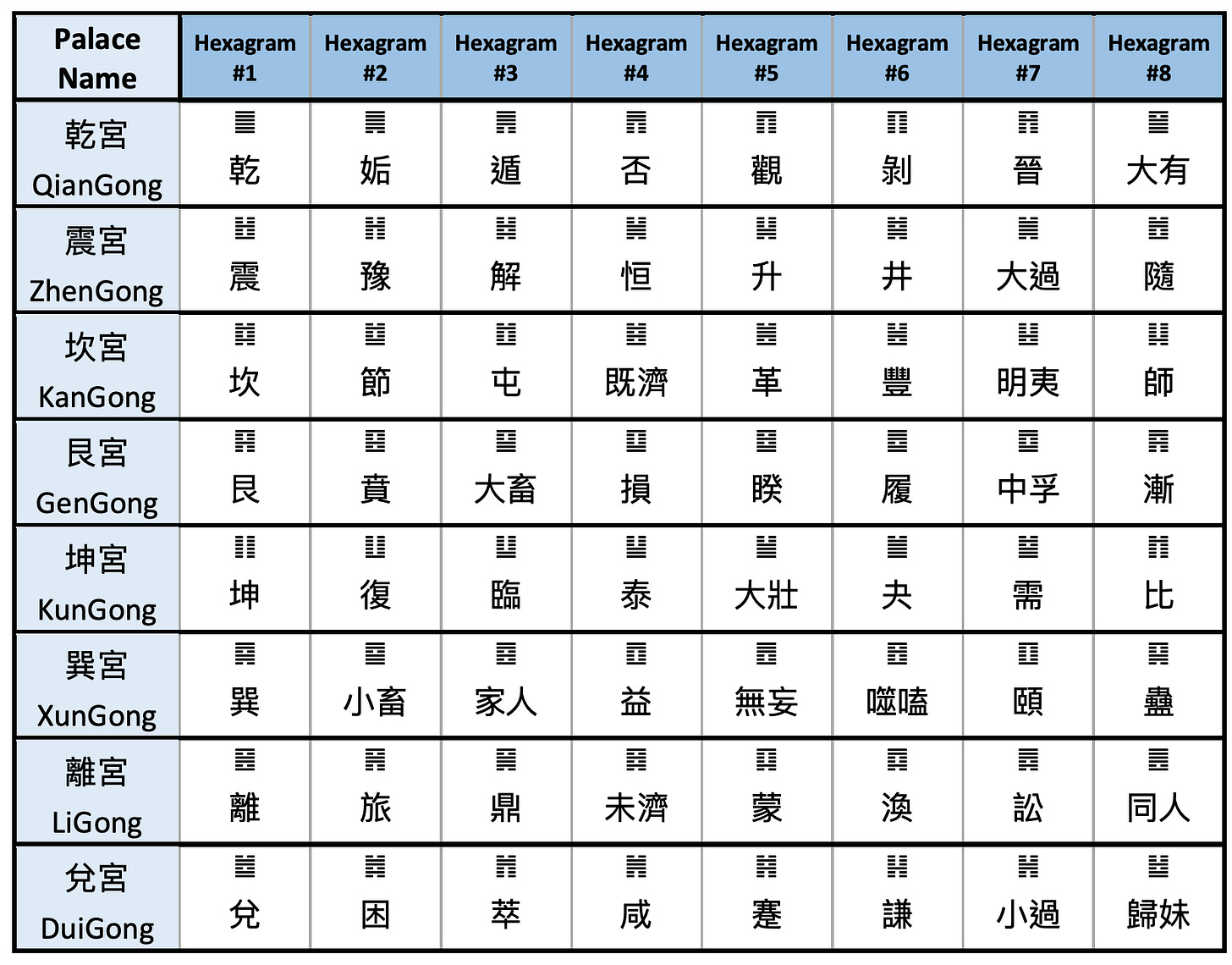FaXiang Yijing 法象 易經
Cultivating with Classical Daoist Symbolism and Imagery
In my teachings and writings, I have emphasized that there are three archetypes of wisdom hidden within the Yijing (I Ching), the Book of Change. These three archetypes are numerology, philosophy and symbolism. For thousands of years, the symbolism within the Yijing has been essential guidance for seasoned practitioners of traditional Qigong and internal alchemy cultivation practices.
I shared BaGua 八卦 (Eight Trigrams) symbolism and numerological cultivation and prediction methods in my book Seeking the Spirit of the Book of Change (2009. London: Singing Dragon). For my next writing project, I am planning to share a series of serious articles on the symbolic meanings of each hexagram from a cultivation perspective, as they relate to specific Taiji cultivation postures.
In my tradition, we typically apply BaGong 八宮, the Eight Palaces sixty-four hexagram arrangement, to help us better understand the quality of each individual hexagram and its symbolic guidance in both inner cultivation and our prediction practices. The BaGong system was passed down by JingFang 京房 (78–37 BCE) in his book, JingShiYiZhuan 京氏易傳. JingFang was a Chinese music theorist, mathematician, astrologer, and prognosticator. He also accurately described the basic mechanics of lunar and solar eclipses.
It has been said that JingFang was the first person to provide a written explanation of a Yijing divination method that has long been popular in China and South East Asia, one based on the relationship between Gua 卦 (trigrams/hexagrams) and GanZhi 干支 (Heavenly Stems and Earthly Branches). He used the Five Elements qualities of the related stem and branch to interpret the lines of the trigrams and hexagrams in order to decode the answer for any given question. Today, this technique is known by various names: LiuYao YuCe六爻預測— Six Lines Prediction, NaJiaFa 納甲法—Installing the Stems and Branches, WuXingYi 五行易— Five Elements Divination, or WenWangGua 文王卦— King Wen’s Hexagrams.
In the BaGong (Eight Palaces) system, each hexagram is assigned to one of the Five Elements. A Palace originates with a hexagram which is made by identical top and bottom trigrams. To create the second hexagram in the Palace, you change line 1 (the bottom or first line). To get the third hexagram, you change the second line, and so on, until you produce the first 6 hexagrams of this group. To produce hexagram 7, you change the the fourth line of hexagram 6. To produce hexagram 8, you change the bottom three lines of hexagram 7. These eight hexagrams of this palace belong to the same element as the original hexagram of this palace (the one that was made by doubling a trigram).
Below is the table of BaGong arrangement of the sixty-four hexagrams:
In this writing project, I will follow the JingFang 京房 Eight Places hexagram arrangement. Thus, in my next article I will share cultivation insights from the original/first hexagram of the Qian Palace (QianGong 乾宮) - Qian 乾 (䷀).
Stay tuned!





